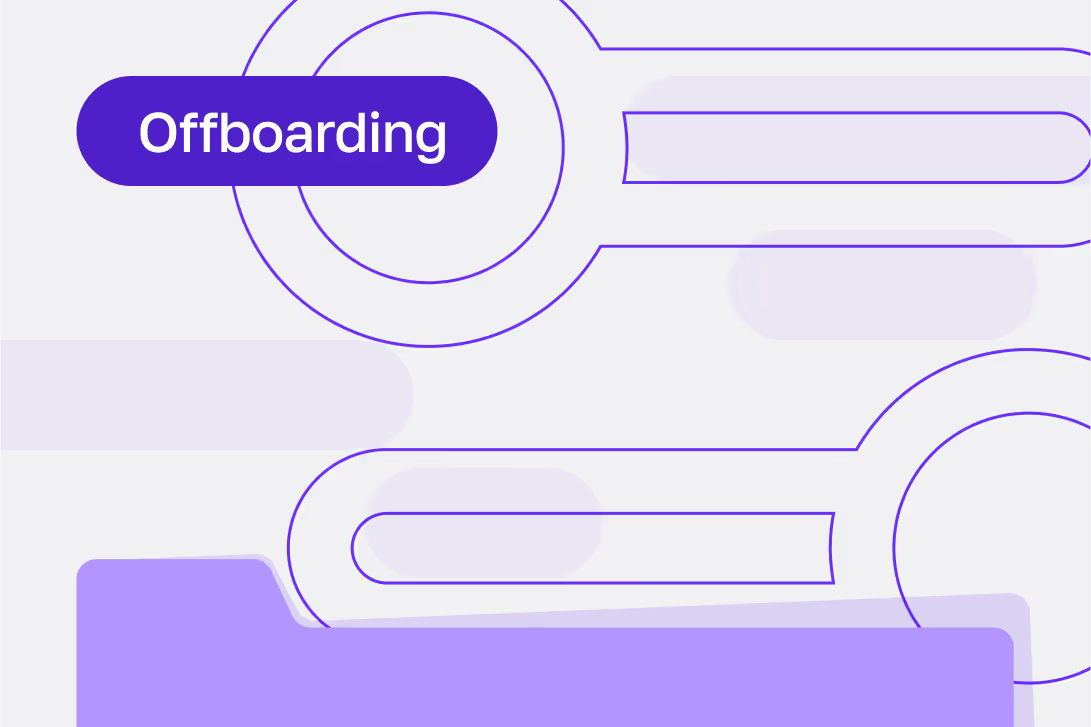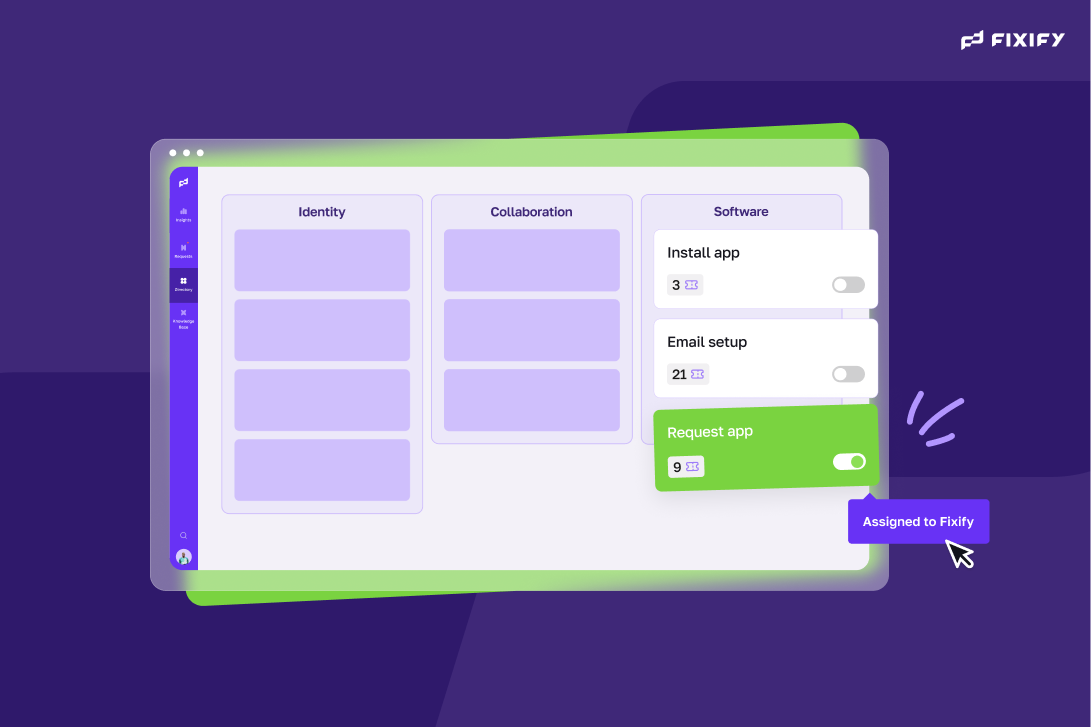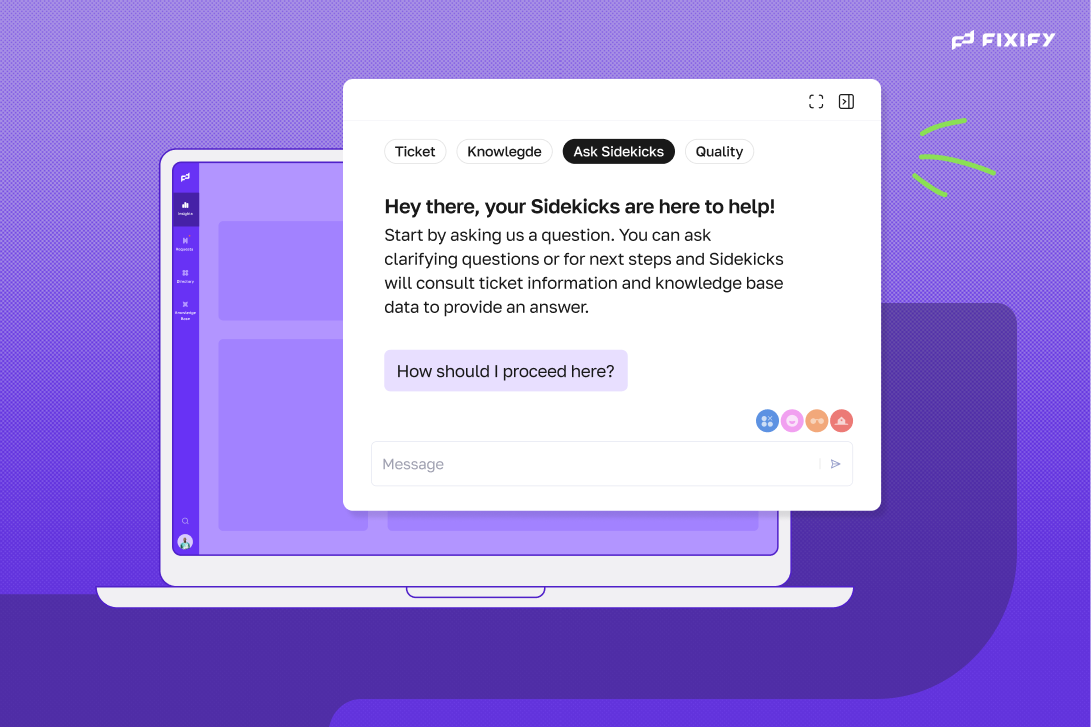AI for IT Support: How to Automate the Boring Stuff (Without Making Employees Hate Bots)


Listen to this blog as a podcast

.png)
Most teams are not trying to replace their help desk with bots. They just want the repetitive stuff handled quickly so people can focus on higher-value work.
The problem is that many automation projects skip straight to tools, then wonder why employees avoid them. We recommend starting with the work itself, removing noise, fixing the process, and then applying AI for IT support where it is truly predictable.
You will get a practical, step-by-step framework for deciding what to automate, how to pilot changes without breaking trust, and how to measure progress with metrics like MTTR and FCR. Along the way, we will cover help desk automation patterns that fit real-world constraints, not lab demos, and we will show how IT service management gets stronger when people and AI share the load.
If your goal is to reduce the number of tickets, expedite resolution, and provide a support experience that employees enjoy, you are in the right place. Let’s dig into the simple moves that make automation work with, not against, your team.
A practical framework for deciding what to automate
Here is a simple way to decide what to automate in your IT help desk. It starts with understanding your work, removing waste, tightening the process, and then applying AI where it is truly repeatable. The goal is not to replace people; it is to make time for higher-value work and a smoother IT service management experience.
Understand: Review IT help desk ticket data to find automation opportunities
Before adding a single workflow, examine the patterns. Pull the last 3 to 6 months of tickets, segment by category, subcategory, and request type, then layer in volume and effort.
You are looking for the intersection of high volume, low variability, and clear resolution paths. Password resets, access requests for common systems, hardware status checks, and software installs often rise to the top.
A practical tip is to quantify the predictable parts of each ticket. If the first three steps of resolution are always the same, that is a signal.
Map those steps and define the minimum fields required to start work. Tickets that can be resolved or meaningfully progressed with structured data make strong candidates for help desk automation.
Eliminate: Remove unnecessary tickets from the queue
Automation is not a shortcut around bad work. It is a way to avoid doing unnecessary work in the first place.
Review your intake to find tickets that should not exist. Common culprits include duplicate submissions, outdated request types, and fixes that belong in knowledge articles.
Create a short list of retire, merge, or convert to knowledge. This list should include quick content edits that deflect repetitive questions.
For example, a concise article that clarifies who approves which access requests can reduce churn at the intake stage. Eliminating noise makes every later step, including AI for IT support, more effective.
Improve: Refine workflows before applying help desk automation
Now, tighten the process. Standardize forms, clarify routing, and define service level targets where they are fuzzy. If you plan to measure mean time to resolution (MTTR) and first contact resolution (FCR), make sure the data model and fields are clean.
You want a crisp handoff between automation and a human analyst, with no rework. Add validation to required fields and provide requesters with a concise, plain-language form that collects the exact details your team needs.
This step is also where you test small changes end-to-end. Start with a single request type and pilot it with a subset of employees. Short feedback loops will help you catch issues early, for example, when a chatbot misses an edge case or a rule routes to the wrong queue. Improved workflows make automation safer and more durable.
Automate: Deploy AI for consistent, predictable processes
Finally, automate the consistent pieces. Use AI to triage, classify, and collect missing details, then apply deterministic actions for the routine steps.
Employee onboarding is a useful early win, since much of the process is a checklist, and the data requirements are well known. Access requests for standardized roles are another reliable candidate.
Helpful guardrails include automatic field validation, confidence thresholds for intent detection, and clear escalation rules. When the model is uncertain, capture the context, attach the transcript, and route to a human with all relevant details. The aim is not to hide the bot; it’s to make the handoff smooth and transparent.
AI’s role in modern IT support
AI for IT support can do real work today, especially where the path from intake to resolution is clear. Think triage, classification, knowledge retrieval, and triggering defined workflows.
Done well, it frees your team to work on improvements to IT service management, resilience, and security. Done poorly, it frustrates employees and adds cleanup for analysts.
Two realities matter here. First, structure beats guesswork. Models perform best when they operate inside well-defined categories and forms. Second, context drives trust.
When the AI explains what it did and when it brings a complete ticket to the analyst, sentiment improves. Keep these two ideas front and center, and you will move faster without eroding the IT help desk experience.
If you want to scan what tools might work well for your team, our roundup of the best AI tools for business is a smart first stop. We’re focused on real use cases, team readiness, and results while putting the selection criteria in context.
Making automation work with, not against, your team
When teams worry about bots, it is usually because automation tries to do too much. A better approach is to use AI for the structured, repetitive tickets and keep people for problem-solving. That balance is not only easier to adopt, but it’s also easier to scale.
Start by giving AI a clear lane. For example, let it confirm the requester’s identity, collect required fields, validate attachments, and propose a resolution if confidence is high. If not, ensure the AI captures key ticket details before escalation to a human analyst.
Add a brief note that summarizes the actions taken and explains why the request was escalated. This simple pattern helps analysts trust the system and spend less time gathering context.
Here are three practical habits that make the partnership work, with a brief explanation of why each matters:
- Announce the lane: Inform employees about the bot's current capabilities and what it will send to a person. This sets expectations and reduces frustration.
- Show the work: Include a brief summary of the steps the AI took, which fields it validated, and any knowledge suggested. Analysts will move faster with this context.
- Invite feedback: Add a one-click way for employees to rate the interaction and share what was missing. That signal helps you prioritize fixes.
Automation that collaborates with people, rather than competing with them, is easier to trust and easier to improve.
Keeping automation aligned with IT goals
Automation should move the scoreboard in the right direction. Monitor incident management metrics, including MTTR and FCR, to confirm that AI improves service quality.
Set targets for each request type you automate, then review weekly for the first month. Watch for signs of value erosion, such as higher reopen rates or increased transfers per ticket.
Two tracking loops help most teams stay aligned. The first loop is operational, focused on volumes, resolution times, deflections from the IT help desk, and analyst workloads.
The second loop is experience, centered on employee sentiment. Short pulse surveys, thumbs up or down after interactions, and quarterly trend reviews make it easier to see whether automation enhances, not erodes, trust.
If you need a reference for designing the metric plan, the practical guidance on IT support analytics from leading collaboration and incident response providers is worth a look.
For example, you can review a clear breakdown of MTTR and resolution drivers from Atlassian’s knowledge base, and compare it with a cloud provider’s recommendations for responsible AI monitoring that cover fairness, performance drift, and human oversight. Use these to create a balanced scorecard that encompasses both operational metrics and sentiment.
Why a balanced AI approach matters for IT strategy
The strategic upside comes from time and focus. When AI handles repetitive tickets, teams can invest in IT service management improvements, such as streamlining change approvals, strengthening identity controls, and closing documentation gaps. That shift compounds, since every improvement reduces future ticket volume and risk.
A human-in-the-loop approach also maintains high quality while scaling. The handoff pattern described above provides analysts with a comprehensive context package, which reduces resolution time and minimizes the need for employees to repeat themselves. Over time, the data you collect on effective prompts, common follow-ups, and resolution paths strengthens your playbooks and your models.
If you are exploring operating models that reduce the cost and risk of building everything in-house, you can learn how dedicated teams support planning, deployment, and oversight in Fixify’s overview of managed AI services. The point is not to outsource thinking; it is to accelerate your learning curve and keep your internal team focused on the work only they can do.
Start shaping an AI support strategy that works for your team
If you are just beginning, keep the scope small. AI for IT support should improve workflows and user satisfaction without replacing human expertise.
Begin with one or two request types, measure outcomes, and expand where the numbers are strong and sentiment is positive. Document what you learn and fold it into a reusable playbook.
These next steps can get you moving this quarter:
- Run a data pull to segment ticket categories, volume, and effort, then shortlist three candidates for automation. Frame the tradeoffs by estimating the potential impacts on deflection and resolution.
- Pilot a structured intake with validation on a single request type. Capture before-and-after metrics for MTTR and FCR, and add a pulse survey for employees who use the new flow.
- Stand up a simple governance loop. Define who approves new automations, who monitors performance and sentiment, and how you will roll back changes if something degrades.
For a practical reference on sequencing, Fixify’s 4-step model for using AI and automation tools maps cleanly to the understand, eliminate, improve, automate framework.
If your team wants to strengthen self-service and reduce repetitive tickets, the primer on building an AI help desk can help you connect the dots between intake, knowledge, and workflow.
Where AI fits next for your IT team
You do not need to automate everything to see value. Start with the boring, repeatable work, keep people in the loop for problem-solving, and measure the impact on MTTR, FCR, and employee sentiment. As your process matures, the balance between AI and human expertise becomes a competitive advantage.
Fixify can help you build that balance, from playbook design to pilot rollout and ongoing monitoring, so your team can win back time for the projects that move the business.
Related articles

A quick offboarding checklist for tech companies


Fixify Service Catalog: The heat map that shows what IT really does all day


Ask Sidekicks: How Fixify’s AI tackles the messy middle of IT

Stay in the loop

Sign up to get notified about our latest news and blogs
.png)